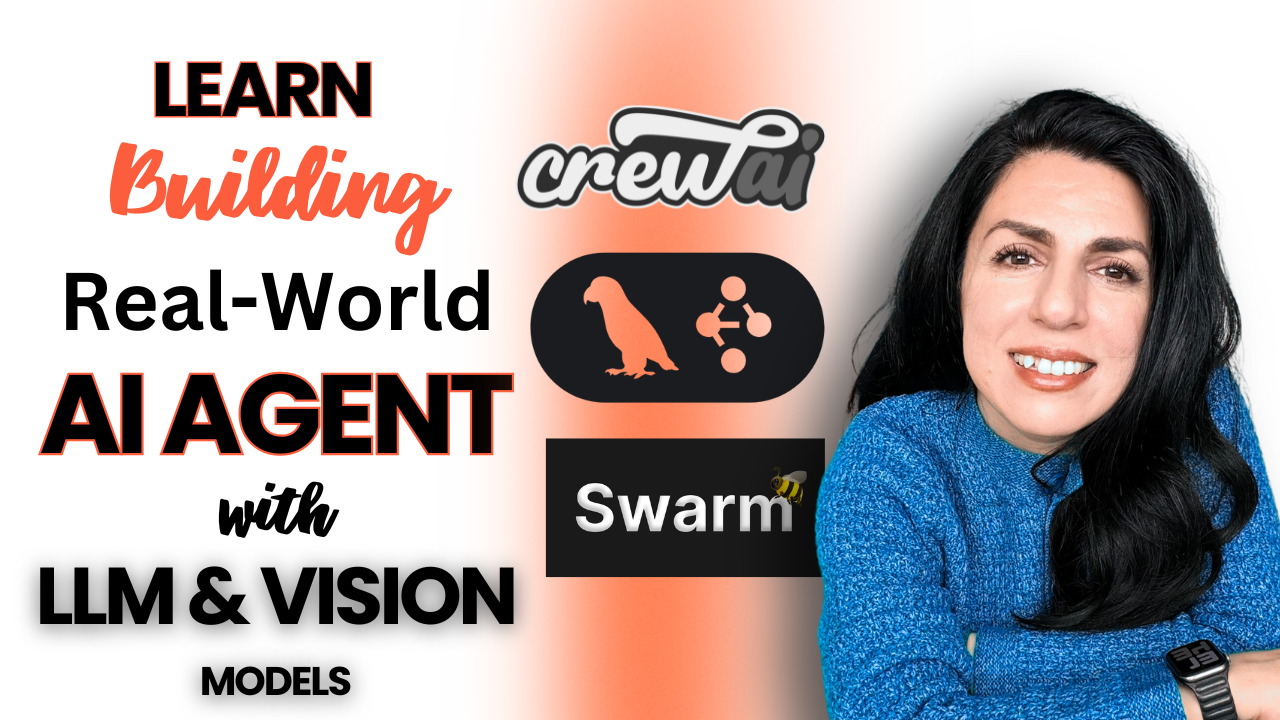DEEP DIVE
Hands-On AI Agents:
12X BEST tips with LangGraph, LangChain, CrewAI, OpenAI Swarm & Hugging Face LLM
Presented by Dr. Maryam Miradi
Online | Pre-recorded | 27 Minutes
Hosted by:
Dr. Maryam Miradi

About Dr. Maryam Miradi
Maryam Miradi is the CEO and Chief AI Scientist of Profound Analytics.
She has over 20 years of experience in AI model development, holds a PhD in AI, has published 24 articles, authored 2 books, received 5 awards, and has experience coaching over 200 data scientists across 12 industries.
She has been awarded as the Best European Researcher in Future Vision.

RAG & DPR
-
Incorporate RAG pipelines to fetch relevant, up-to-date documents. Tools like FAISS and ChromaDB can enhance the retrieval process for context-aware generation.
- Implement DPR for fast, precise document and passage retrieval, especially for large datasets.

Audio, Image, Tabular Data
- Add human-like voices using tools like ElevenLabs or Hugging Face’s TTS models to enhance interactivity.
- Use real-world datasets (e.g., Kaggle medical records) or pre-trained models for tasks like pneumonia detection with Hugging Face’s medical imaging tools.

Flow Engineering & Optimizing Performance
- Use platforms like Groq for faster token generation or Ollama for efficient local processing with hardware optimization.
- Visualize processes as sequential flows, leveraging tools like CrewAI’s pipeline visualization to ensure clarity and logical progression.
🔑 Key Takeaways:
✸ Simplify Prompts: Avoid overly complex instructions; use clear, goal-oriented prompts.
✸ Incorporate Real-World Data: Leverage structured data and pre-trained models for reliability.
✸ Test Components Individually: Validate each agent and tool separately before integration.
✸ Use Retrieval-Augmented Generation (RAG): Enhance outputs with up-to-date, relevant information.
✸ Manage Context Windows: Divide large datasets into manageable chunks to avoid token limitations.
✸ Optimize Workflow with Flow Engineering: Visualize and build workflows step-by-step for clarity.
✸ Enhance Speed and Performance: Use platforms like Groq and Ollama for faster, optimized responses.
✸ Configure Vector Databases Effectively: Tune embedding quality, chunk size, and overlap for accurate retrieval.
✸ Integrate Speech and Audio: Add human-like voices for engaging, dynamic agents.
✸ Use Prompt Templates: Employ dynamic variables to create reusable and flexible agent designs.
✸ Choose Specialized LLMs: Match models to tasks for optimal performance (e.g., reasoning, creativity, image-to-text).
✸ Leverage Advanced Retrieval Methods: Combine RAG with dense passage retrieval (DPR) for precision and efficiency.
🌟 Ready to apply these principles?

Hands-On AI Agents 12 X Tips
How to fix 12 AI Agents common pitfalls with Langgraph, LangChain, OpenAI Swarm CrewAI, RAG (Retrieval Augmented Generation), and Hugging Face LLMs.

